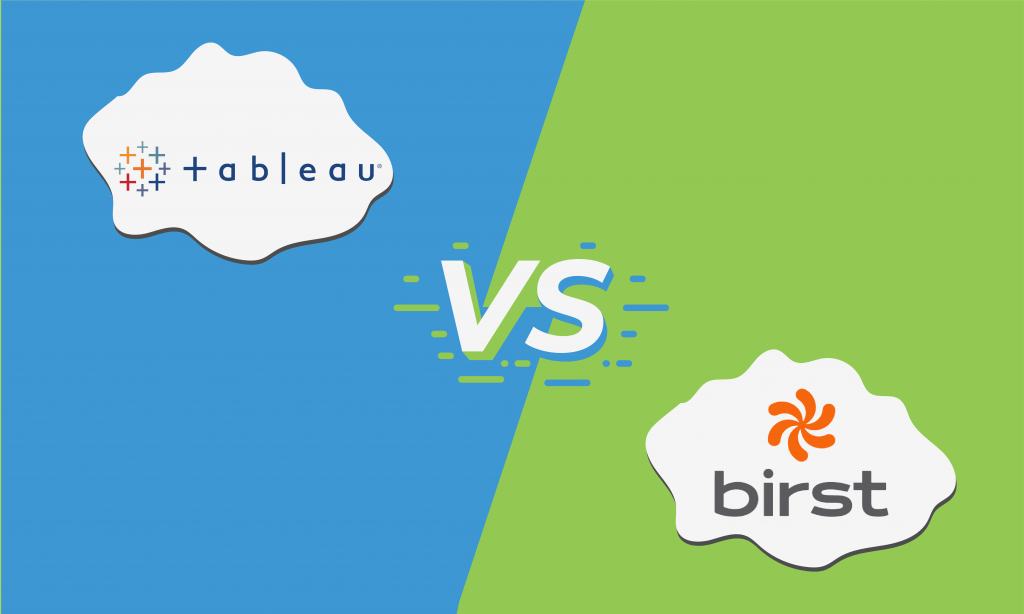- categoryBusiness Intelligence
- ContentComparison
Discovering new ways to improve your business can be a tough job. Luckily, there are a lot of modern software options to help you improve your company. If you’re looking for business intelligence tools for your company, we suggest you focus your search on Tableau and Birst.
Tableau is a business intelligence tool that features numerous tools to help you manage your company’s data and make it available for easy consumption by key stakeholders through visualizations. This product empowers your business to be more data-driven and connected.
Birst is a business intelligence tool that processes your data and converts it to analytical projections. Its embedded predictive applications will help you predict future outcomes for the company accurately. It can also produce high-quality reports based on the data collected from various sources.
Unsure if Tableau or Birst is the software for you? Take a 5-minute assessment to get free recommendations tailored to your specific needs. Our Product Selection Tool is completely free to use.
Typical customers
When it comes to target customers, Tableau is a tool that fits any level of business. Whether you’re a freelancer working independently or an enterprise-level corporation, Tableau can get the job done. Tableau has a lot of packages to choose from that will fit your business.
Birst’s typical customers include front-line business workers that range from mid-sized businesses to enterprise-level companies. Because of its advanced features, this tool needs a little time to get used to. That’s why most customers who buy this software are data analysts from mid-sized companies who are experienced in using BI software.
Supported platforms
Tableau and Birst BI both have their supported platforms where they can be accessed or used. Having a lot of supported platforms allows your BI tool to be more flexible and accessible. Here are the available platforms for Tableau and Birst:
- Web-based
- Android app
- Apple/ iPhone app
Supported features in Tableau vs. Birst
While each business intelligence tool has unique features, collecting and processing data is still the primary goal of the software. Here are some similar features both Tableau and Birst offer:
Data mapping
Data mapping in Tableau focuses on processing and moving data from one platform to another. Because Tableau supports integrations and data sourcing from numerous third-party apps, you can process data on any platform and transfer it to Tableau. This feature allows more flexibility and accessibility in your business.
Birst’s data mapping feature allows you to process data on a given schedule and can be done quarterly or monthly or can be triggered by an event. It helps you reduce the time spent in doing the repetitive task of processing your company’s data.
Read also: Sisense vs. Tableau: A Scalable Business Intelligence Comparison
Data visualization
Tableau gives you a wide variety of charts, graphs, and tables for you to choose from. These visualization tools range from simple to complex, depending on your needs. Each intuitive graph and table are optimized to help you accurately predict a possible outcome.
On the other hand, Birst delivers a standardized prediction to every user. It means all the data the desktop platform produces is the same as the one created on a mobile platform. All data the visualizations produce seeks to be transparent to each recipient.
Tableau or Birst? Which BI tool should you choose?
If you’re looking for a BI software that focuses on accessibility and flexibility, we suggest you consider Tableau. With Tableau’s seamless features and numerous supported platforms, it can improve the data visualization and data processing of your business.
On the other hand, if you’re looking for a business intelligence tool that focuses on generating new revenue streams, we suggest you take a closer look at Birst. Because of its accuracy in processing data and intelligent predictions, you’ll be able to produce more accurate decisions. Using this business intelligence tool might take some time to get used to, but once you do, the benefits are limitless.
For more reviews, make sure to check out other business intelligence tool reviewshere on our website.
